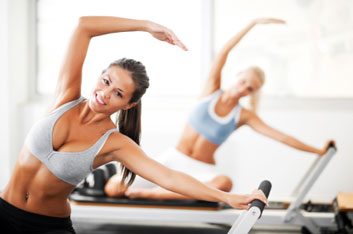
1. Plan your workout routine
“Most people who go to the gym flounder around, thinking about what to do next,” says Brad Schoenfeld, author of 28 Day Body Shapeover. “This is inefficient and reduces the quality of a workout.” He suggests writing down your exercises and times before going to the gym (and taking your schedule with you!). This will eliminate decision-making at the gym and streamline your workout.
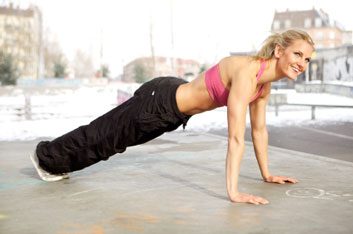
2. Shorten your rest periods
“Most people rest far too long between sets, heading to the water cooler and chatting with friends,” says personal trainer Narina Prokosch, owner of Victoria Wellness Professionals in B.C. She suggests using a stop watch or the gym’s clock. “Limit your rest periods to 30 to 45 seconds,” she says, “and be ready to start back onto your next exercise as soon as the watch dictates.” Prokosch also advises incorporating “active rest” exercises, which don’t require great amounts of energy, but still keep you moving. Core exercises are great “active rest” moves.
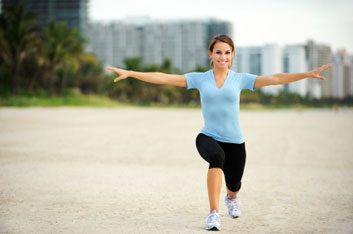
3. Choose multi-joint exercise moves
Multi-joint moves, as you might expect, involve more than one joint, says Schoenfeld; good examples are squats, lunges, rows and presses. “Since these moves involve a large number of muscles, they’re more efficient than single joint moves, such as leg extensions, leg curls, or flys,” he says. “You don’t have to do as many repetitions to develop the same number of muscles.” He suggests compound moves for even greater efficiency (exercises that combine two movements into one). Lisa Workman, an Edmonton-based exercise physiologist, agrees; she likes to combine wall ball squats with biceps curls or stationary lunges with a shoulder press. “This both saves times and maximizes energy expenditure, which translates to more calorie burn,” she says.
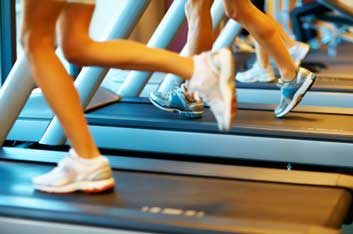
4. Try interval training
Workman encourages interval training if you’ve been doing cardio three times a week for at least six weeks. “Intervals increase cardiovascular stress and physical fitness, and shorten the time you’re on the machines,” she says. She suggests aerobic intervals of three minutes at slightly higher intensities (increased speeds, grades, resistances, etc.), followed by a minute and a half at your regular level. Repeat four to five times.
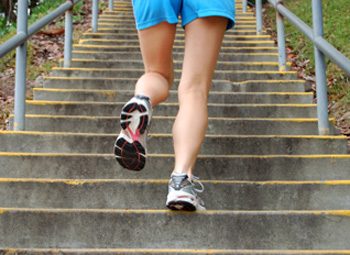
5. Time your exercise to your menstrual cycle
Don’t tell your health club manager, but the next time he sees you climbing like mad on the StairMaster, it’s because you’re in the latter part of your menstrual cycle. A study from the University of Adelaide in Australia found that women who exercise during this time of the month, when levels of estrogen and progesterone are highest, burn more fat for energy, leading to less exercise-related fatigue.

6. Check your iron levels
Iron enables your blood cells to carry much-needed oxygen to your body tissues. A study from Cornell University found that women with low levels of iron-but not low enough to be classified as anemic-find it more difficult to maintain exercise and training than women with normal levels. An estimated 16 percent of North American women have this level of iron deficiency and don’t know it. Women who are physically active, dieting, or vegetarians are particularly at risk.
Supplementing your diet with iron can double your exercise endurance compared to iron-deficient women who don’t supplement. Don’t try this on your own, however- iron should be taken under your doctor’s supervision. Good sources of dietary iron include red meat, seafood, and citrus fruit or juice taken with meals to improve absorption from iron-rich foods such as legumes, whole grains, and green vegetables.

7. Fuel your body with proper nutrition
“If you want to maximize your workout, you must maximize your nutrition,” says Jon-Erik Kawamoto, a strength coach in Burnaby, B.C. He recommends a protein/carbohydrate source 60 to 90 minutes before your workout, and another protein/carbohydrate source within 30 minutes afterward to maximize your recovery. “A pre-workout favourite of mine is a scoop of protein powder in milk with a piece of toast. A post-workout favorite is a scoop of protein powder and orange juice,” he says. “You have to replenish your energy stores and rebuild the muscle you just broke down.” Experiment and find the foods that make you work out stronger and feel better after.
Related:
• 5 ways to challenge yourself at the gym
• 5 ways to beat boredom at the gym
• The best total-body workout
